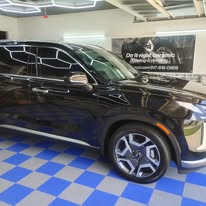Car insurance is one of those essential yet often overlooked aspects of vehicle ownership. Whether you’re a new driver or a seasoned one, selecting the right car insurance policy can feel overwhelming with the multitude of options available. However, choosing the right coverage for your specific needs can not only protect you financially in the event of an accident but also ensure peace of mind on the road.
In this guide, we’ll break down everything you need to know about car insurance policy, including types of coverage, factors to consider when shopping for policies, and tips on how to make the best choice for you.
Understanding Car Insurance: What Is It and Why Do You Need It?
Car insurance is a contract between you and an insurance provider in which you agree to pay regular premiums, and in return, the insurer provides financial protection in the event of an accident, theft, or damage to your vehicle. It’s legally required in most places to ensure that drivers are financially responsible for their actions on the road.
There are several types of car insurance coverage, and it’s essential to understand each one to ensure you’re adequately covered. Let’s dive into these types so you can determine which will work best for your circumstances.
Types of Car Insurance Coverage
-
Liability Coverage
Liability insurance is the most basic and often legally required form of car insurance. It covers the costs of damage to other people’s property or injuries sustained by others in an accident where you are at fault. However, it does not cover any damage to your vehicle or injuries to yourself.
-
Bodily Injury Liability: Pays for medical expenses, lost wages, and legal fees if you cause an accident that injures someone else.
-
Property Damage Liability: Covers the cost of repairing or replacing another person’s property (like their car or a fence) if you’re responsible for the damage.
Best For: Drivers with older cars or those who want to meet the minimum legal requirements.
-
Collision Coverage
Collision insurance covers damage to your own vehicle caused by a collision with another vehicle or object, regardless of who is at fault. For example, if you hit a tree, pole, or another car, collision coverage can help pay for repairs or replacement.
Best For: Drivers who have newer cars or who want to ensure their own vehicle is protected.
-
Comprehensive Coverage
Comprehensive insurance goes beyond accidents. It covers non-collision-related incidents like theft, vandalism, natural disasters, fire, or hitting an animal. This coverage is typically optional but highly recommended if you live in an area prone to theft, storms, or other environmental risks.
Best For: Drivers who live in high-risk areas or own vehicles that are valuable.
-
Personal Injury Protection (PIP) or Medical Payments (MedPay)
Personal Injury Protection (PIP) covers medical expenses for you and your passengers in the event of an accident, regardless of who was at fault. In some states, PIP is mandatory, while in others, it’s optional. MedPay is a similar coverage but usually more limited in scope.
Best For: Drivers who want to ensure that medical bills are covered for themselves and passengers, particularly if they don’t have health insurance.
-
Uninsured/Underinsured Motorist Coverage
Uninsured or underinsured motorist coverage protects you if you’re involved in an accident with a driver who doesn’t have enough insurance (or any insurance at all). This can also cover hit-and-run situations.
Best For: Drivers who want extra protection in case the other driver isn’t adequately insured.
-
Gap Insurance
Gap insurance covers the difference between what you owe on your car loan or lease and the actual cash value (ACV) of your car in the event it’s totaled. Since cars depreciate quickly, your car may be worth less than what you owe, and gap insurance helps bridge this gap.
Best For: Drivers who are leasing or financing their vehicles.
Factors to Consider When Choosing Car Insurance
Selecting the right car insurance policy isn’t just about choosing the most affordable option. Here are some critical factors to consider:
-
Your Driving History
Your driving record is one of the key factors insurers use to determine your premiums. If you have a clean driving history with no accidents or traffic violations, you may qualify for lower rates. On the other hand, a history of accidents or speeding tickets could raise your premiums.
-
The Age and Value of Your Car
The age, make, and model of your car can significantly impact the cost of your insurance. Older cars may only need liability coverage, while newer vehicles may require more comprehensive protection due to their higher value.
-
Your Location
Where you live can also play a significant role in determining your insurance premiums. Cities with higher rates of accidents, theft, or natural disasters may result in higher premiums. Conversely, rural areas with fewer accidents may lead to lower rates.
-
Your Budget
It’s crucial to balance coverage with affordability. While you may be tempted to opt for the cheapest plan, it’s important to ensure it covers all the risks you might face. Think about your budget and how much you can afford in premiums versus how much coverage you actually need.
-
Your Deductible
A deductible is the amount you pay out of pocket before your insurance kicks in. Choosing a higher deductible can lower your premium, but be sure you can afford to pay that amount in case of an accident. It’s important to find a balance between the deductible and your monthly premium.
-
Additional Discounts
Many insurance companies offer discounts for factors such as:
-
Good driving record
-
Bundling multiple policies (like home and auto)
-
Safety features in your vehicle
-
Low annual mileage
Be sure to inquire about any available discounts that may apply to you.
How to Compare Car Insurance Quotes
Once you’ve determined the types of coverage you need, the next step is to compare car insurance quotes. Here’s how you can do it effectively:
-
Gather Information: Provide accurate details about yourself, your driving history, and your car when requesting quotes. The more precise the information, the more accurate the quote will be.
-
Use Online Comparison Tools: Several websites allow you to compare quotes from multiple insurance providers quickly. These tools can save time and help you identify the best rates.
-
Check Coverage Limits: Make sure you’re comparing similar coverage levels across different providers. A cheaper policy might offer lower coverage limits, which could leave you underinsured.
-
Consider the Insurer’s Reputation: Price isn’t everything. Check the insurer’s financial stability and customer service record. You want to ensure they’ll be responsive when it comes time to file a claim.
-
Read the Fine Print: Always read through the policy details carefully. Some policies may have exclusions, so it’s important to understand what is and isn’t covered.
How to Save on Car Insurance
-
Increase Your Deductible: As mentioned earlier, increasing your deductible can lower your premiums, but ensure that you can comfortably afford the deductible amount.
-
Bundle Policies: Many insurers offer discounts if you bundle multiple types of insurance (e.g., home and auto). This can result in significant savings.
-
Maintain a Clean Driving Record: Keeping a clean driving record with no accidents or violations will help you maintain lower rates over time.
-
Take a Defensive Driving Course: Some insurers offer discounts for completing a defensive driving course, which can also improve your driving skills.
-
Consider Usage-Based Insurance: Some insurers offer discounts for low-mileage drivers through usage-based insurance programs, where your premiums are based on how much you drive.
Final Thoughts: Finding the Right Car Insurance for You
Choosing the right car insurance is not a one-size-fits-all decision. It depends on various factors, including the type of vehicle you own, your driving habits, your budget, and your preferences for coverage. By understanding the different types of car insurance coverage and considering key factors such as location, driving history, and available discounts, you can make an informed decision that provides you with the protection you need without breaking the bank.
Before making a final choice, take your time to research, compare quotes, and read through policy details carefully. Car insurance is an essential part of responsible driving, and selecting the right policy ensures you’re financially prepared for whatever the road throws your way.
Key Takeaways:
-
Understand the types of coverage available: liability, collision, comprehensive, personal injury protection, and uninsured motorist.
-
Consider factors such as your driving history, car age, location, and budget.
-
Compare quotes and review policy details to find the best value for your needs.
-
Don’t forget to ask about discounts that could lower your premiums.
By following these tips, you’ll be well on your way to choosing the right car insurance that gives you peace of mind on the road.



